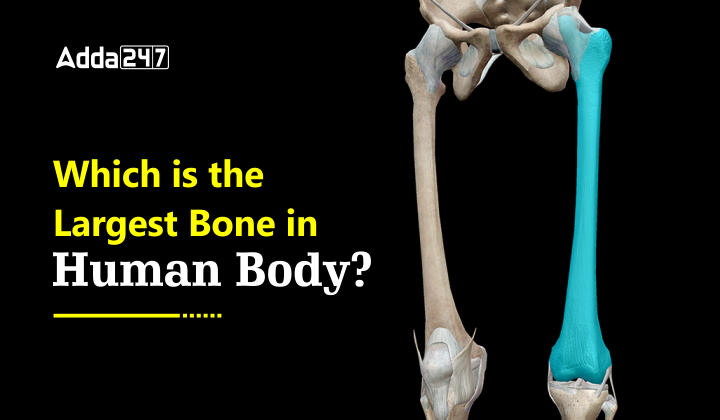Largest Bone in Human Body
Within the human body, the femur, situated in the leg, hold the distinction of being the largest bone in human body. In adult individuals, it spans approximately 20 inches (50 centimeters) in length and is commonly referred to as the thigh bone. This remarkable bone extends from the hip to the knee and typically accounts for about 27.5% of a person’s total height.
Remarkable Femur Length of The Giant Constantin
Julius Koch, famously known as The Giant Constantin due to his gigantism, possessed the largest documented femur, measuring 30 inches (76 cm) in length. Koch, originally from Germany, lived from 1872 to 1902.
What is the appearance of the femur?
The femur exhibits a design comprising of two spherical extremities and an elongated central shaft. This form is often depicted in cartoons as the quintessential bone shape: a cylindrical structure featuring two rounded protuberances at either end.
The Mighty Femur: Exceptionally Long and Incredibly Strong
- Not only does the femur hold the distinction of being the largest bone in the human body, but it also boasts unparalleled strength, capable of bearing up to 30 times your body weight.
- Functioning as a vital connection between the knee and the hip, this bone plays a pivotal role in upholding the entire upper body, providing essential stability and facilitating walking.
- Its significance extends to the fundamental aspects of standing and movement. Moreover, the femur plays a critical role in supporting numerous essential muscles, tendons, ligaments, and components of the circulatory system.
Resilience of Human Femurs: Insights from Compressive Strength and Archaeological Significance

- The capacity of human femurs to withstand compressive forces ranging from 1,800 to 2,500 pounds (800 to 1,100 kilograms) contributes significantly to their exceptional preservation within skeletal remains.
- A 2019 study published in the Journal of Clinical Medicine Research highlights this robustness, underscoring the valuable insights it offers to the field of archaeology.
Common Issues Affecting Femurs and Their Associated Symptoms
Femurs are susceptible to various issues, including fractures, osteoporosis, and patellofemoral pain syndrome. These conditions manifest with distinct symptoms:
Femur Fractures
A femur fracture, resulting from significant traumas like car accidents or falls, present with the following signs:
- Intense pain
- Swelling
- Tenderness
- Limited leg mobility
- Bruising or skin discoloration
Osteoporosis
Osteoporosis, which renders bones fragile and prone to sudden breaks, often goes unnoticed until a fracture occurs.
Symptoms may not be readily apparent, but the following groups are at higher risk:
- Women and individuals assigned female at birth
- Adults aged 50 and older
Patellofemoral Pain Syndrome (PFPS)
Patellofemoral pain syndrome, also known as runner’s or jumper’s knee, involves discomfort around and beneath the kneecap.
PFPS may stem from factors such as excessive knee use or improper footwear. The symptoms include:
- Pain while bending the knee (squatting, climbing stairs)
- Discomfort after prolonged knee flexion (sitting)
- Audible crackling or popping in the knee when standing or stair-climbing
- Increased pain with changes in playing surface, sports gear, or activity intensity
Maintaining Femur Health
Prioritizing a well-balanced diet and a consistent exercise regimen is crucial for sustaining both bone and overall well-being.
To keep your femur healthy, adhere to these general safety guidelines:
- Employ appropriate protective gear for various activities and sports.
- Pursue a diet and exercise regimen that fosters robust bone health.
- Utilize appropriate tools or equipment within your home to access objects.
- Regularly undergo a bone density scan, also referred to as a DEXA scan, to assess and monitor bone density.
- Ensure adequate calcium intake through your diet or using calcium supplements.
- Monitor your Vitamin D level.
- Avoid the use of drugs and tobacco, and limit alcohol consumption.
Key takeaways for competitive examinations
- A doctor who specializes in diagnosing and treating problems with the bones: Orthopedic
Find More General Studies News Here



 Paris Olympics 2024 Medal Tally, India M...
Paris Olympics 2024 Medal Tally, India M...
 Which District of Madhya Pradesh is Famo...
Which District of Madhya Pradesh is Famo...
 EC Signs Electoral Cooperation Pact with...
EC Signs Electoral Cooperation Pact with...

